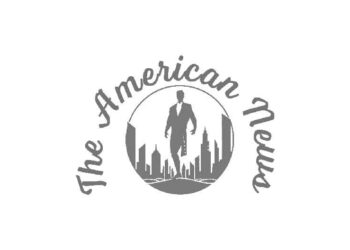Open this photo in gallery:
Wajax Corp. operates the largest Hitachi dealership in North America.
Our future may soon be dominated by artificial intelligence, electric vehicles and Instagram feeds from social influencers, but investors should not confine their portfolio research to these exotic growth sectors. After all, someone has to sell and service the heavy equipment used to clear the ground and build the new battery plants and data centres which will support the growth in computational requirements demanded by these products and services.
The first name which springs to mind in heavy equipment is, of course, Caterpillar Inc. (CAT-N), which has a whopping return-on-equity of almost 60 per cent. There are two TSX-listed distributors of their products in Canada: Toromont Industries Ltd. (TIH-T) and Finning International Inc. (FTT-T). Those companies enjoy a high investor profile with market capitalizations of $11-billion and $6-billion, respectively, and eight or nine sell-side analysts offer opinions on the outlook for each company. Both are well managed and very profitable with returns on equity close to 20 per cent, and their stock price valuations reflect this positive scenario. So it is tempting to look elsewhere for an unrecognized beneficiary of this infrastructure rollout.
As a small-cap value investor, my recent portfolio addition in this sector is Wajax Corp. (WJX-T), which operates the largest Hitachi dealership in North America.The company was founded before Confederation as a blacksmith shop in Montreal in 1858 – 166 years ago. It now reports revenues of $2.2-billion, split almost evenly between heavy equipment sales and support, and industrial parts and engineered repair services. Equipment sales make up almost 30 per cent of the total, with product support at 25 per cent and industrial parts making up another 28 per cent. The remaining 17 per cent comprises its repair and rental business.
Revenues have grown at an annual rate of about 8 per cent over the past five years. Earnings for each share follow a more lumpy trajectory and will likely decline from $3.88 in calendar 2023 to $3.11 in 2024 before recovering to $3.66 in 2025. This earnings variability reflects the fact that, even with revenues in excess of $2-billion, the deferred delivery of a $20-million mining shovel can seriously affect quarterly earnings. As a result, the four sell-side analysts see modest upside potential from the current price of $25.50 with a target price range of $26 to $30. The market cap of only $570-million and average daily trading volume of 26,000 shares no doubt contribute to the minimal street interest.
Investors with a longer time perspective than quarterly earnings reports will find that Wajax has embarked on a slow process to enhance return on invested capital, beginning with a closer relationship with Hitachi Construction Machinery, which in turn is focused on building its market share in North America. Wajax is that company’s sole Canadian distribution partner and should be a beneficiary of Hitachi’s increased sales and marketing efforts. Other heavy equipment brands represented by Wajax include Tigercat in the forestry sector plus Terex Corp. and Hyster Co. in material handling.
The industrial parts and engineered repair services side of the business is higher margin and less cyclical with the potential to raise the profitability of the company as it is less capital-intensive. Improved profitability is also dependent on a successful rollout of a new ERP software system to help automate and manage some core operational functions.
Top-line growth may also accelerate if the company is able to build on its previous acquisition history. More than $200-million has been invested in eight acquisitions in the past five years with purchase prices ranging from $1.8-million to $99-million, so any impact will likely be incremental rather than transformational.
If the short-term outlook for Wajax is modest, so are the valuation parameters. At a recent price of $25.50, the stock trades at eight times earnings and a small premium to book value of $23.84. These valuation ratios may be appropriate right now as the return on equity is only 14 per cent in spite of a leveraged balance sheet. Management is focused on improving both profitability and balance sheet leverage. If successful, the stock valuation ratios will follow suit.
For a patient value investor, this is not a high admission price to pay for a company which should enjoy a rising tide of infrastructure spending over the next few years. In the meantime, the well-covered dividend yield of 5.5 per cent in a declining interest-rate environment prompted me to move from the sidelines and add Wajax to my portfolio.
Robert Tattersall, CFA, is co-founder of the Saxon family of mutual funds and the retired chief investment officer of Mackenzie Investments.
Source link : http://www.bing.com/news/apiclick.aspx?ref=FexRss&aid=&tid=67187e2847ab47519e9abab57025b728&url=https%3A%2F%2Fwww.theglobeandmail.com%2Finvesting%2Finvestment-ideas%2Farticle-wajax-corporation-older-than-canada-and-still-growing-steadily%2F&c=9043956490403140007&mkt=en-us
Author :
Publish date : 2024-10-21 04:51:00
Copyright for syndicated content belongs to the linked Source.









